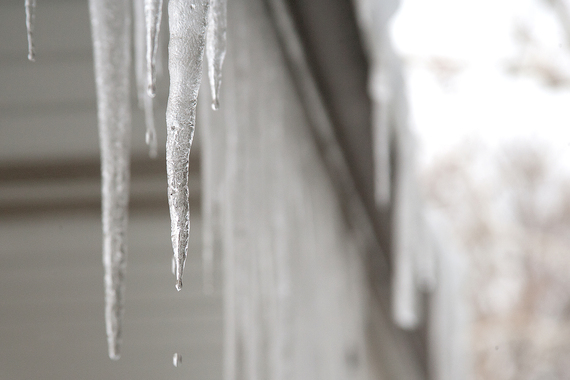If the last winter storm taught me anything, it's to make sure I'm ready for the next one.
Having recently experienced the hassle of frozen water pipes, I made sure they were well insulated before the polar vortex.
Preparation is key to increasing your odds of staying warm and dry during the next blizzard or cold snap. So if you haven't already done so, take some time to answer these five questions:
Where is my home's water shut-off valve? Freezing temps combined with strong winds can cause water pipes to burst (thank heavens mine didn't!). When pipes fail, shutting off the water flow quickly can prevent thousands of dollars in repairs later. So make sure you know in advance how to shut off your main water supply. If you can't locate the valve, ask your plumber for help. Also, consider reviewing your homeowners' insurance policy to see if you're covered for water damage from burst pipes and other causes.
Is my roof prone to dams? Long, pretty icicles can signify an ice dam, which may cause ugly water damage when melting snow and ice are trapped by ice on a roof's edge. The best prevention is to make sure your attic is properly insulated and ventilated, keeping excess heat from melting snow, which trickles down the roof until it re-freezes at the cold edge of the roof, creating the dam. Also, be sure to clear debris from gutters and downspouts during the rest of the year.
Does my sump pump work? To test whether your pump can keep snowmelt or spring rain from flooding the basement or crawlspace, pour a few buckets of water in the sump pit.
Am I ready to be trapped in my car? Winter driving carries with it the risk of having a breakdown, running off the road or getting stuck. Keep an emergency kit and other supplies on hand, just in case. Stock a snow shovel, ice scraper and brush, jumper cables, flashlight, blanket or sleeping bag, bag of sand or kitty litter, warm clothing, water, nonperishable food, can of tire inflator and a first-aid kit. When bad weather is forecast, fill up your gas tank and make sure tires are properly inflated.
Who'll clear my driveway? Before you're snowed or iced in, research and connect with a reputable local snow removal company. Consider arranging to be put on a list for automatic plowing when snow reaches a certain height. If you own a snow blower, make sure it's working. If you don't have one, ask a neighbor if you can use theirs. Consider arranging to share fuel and maintenance costs.
Making the effort now to answer these questions means that when the next storm hits, you won't have to waste time panicking about your house and will instead have time for more important things, like making a snowman with the kids or cozying up with a hot cup of cocoa.
(Photo by Steve Mitchell)
